|
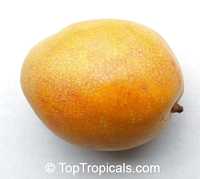
3169 Alphonso
Alphonso is considered by many to be the best Indian cultivar in terms of sweetness and flavor. One of the rarest varieties and sought after - sweet large juice fruit.
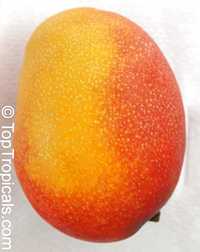
3120 Jakarta
This mango is a cross of a Kent and Bombay and inherited the finest features of each variety: the large size and gorgeous yellow/red color of the Kent; and the excellent, exotic flavor of the Bombay. 'Jakarta' is a virtually fiberless selection of good eating quality and consistent production. When fully ripe the skin will turn deep orange to red and display numerous white dots. Consistent producer. To determine when to pick, look for yellowing on lower half of fruit. Relatively cold hardy variety.
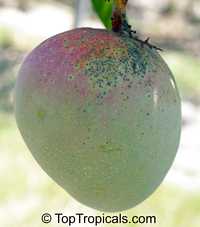
3132 Kent
This variety originated in Coconut Grove, Florida in 1945 from a Haden seed. It has an excellent flavor, large size, and very little fiber. Considered by many to be one of the best tasting Florida mangoes. Eat before fruit gets too ripe. The most rewarding attribute is a bountiful late season crop.
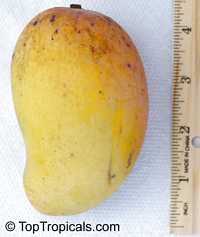
3131 Pim Seng Mun
If you like green mangoes, you will love this one! As with many Thai mangoes, this variety must be eaten green to fully enjoy its unique apple-like qualities. It has a crunchy, crisp texture with a pleasantly tart taste. Pick when the fruit are full-sized and green, before they ripen. For the truly different taste, try the fruit with salt and Cayenne pepper.
|
|
|
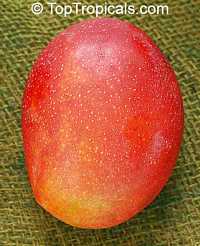
3232 Baileys Marvel
This mango is very similar to the Haden, only better! It has the same flavor with the Haden, with less fiber. The fruit are also bigger and less prone to fungus problems. Pick when you see the base of the fruit turning yellow. Eat before fruit gets too ripe. Best cold tolerance.
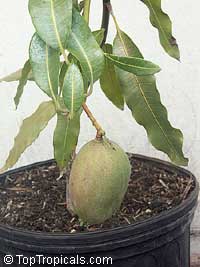
3113 Julie (Dwarf)
This variety is a perfect choice for those with a small yard because it is a very compact, dwarf tree. This is the most popular variety in Jamaica and many other Caribbean islands because of its rich, sweet, coconut/pineapple-like flavor. To fully enjoy this unique tasting mango, it is best to eat on the same, or next day after it falls from the tree before it gets too ripe. In Florida it is sought after for its dwarf growing habit. Florida’s humidity makes this tree a challenge to grow, however. Fungus problems which lead to twig die back are common, making fungicide applications necessary for success.
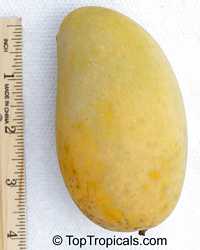
3124 Philippine
This variety originated from Philippines and is also popular in Mexico and Cuba. This small fiberless fruit was introduced to Florida from Cuba. In Mexico, it is known as Manila, in Philippines - as Carabo. The flesh is soft, melting, and has a sweet rich flavor, with an aroma typical of the Indo-Chinese types, it is very different from the Indian types. The fruit hang in clusters on the stem. The tree is well adapted to South Florida.
For more info,
see Mango varieties chart
|
|
|
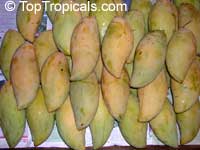
3233 Okrung Tong
This one of the most popular varieties in Thailand. The fruit are extremely sweet, with a rich Indo-Chinese type flavor. The fruit are small, hang in clusters, and turn yellow when ready to pick.
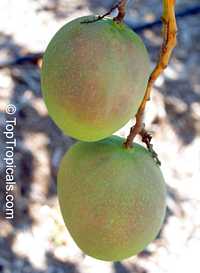
3901 Beverly
A fiberless selection from Central America having firm, juicy flesh. Excellent and can easily be kept small.
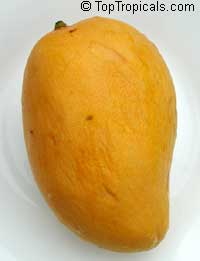
3136 Mallika
'Mallika' is a condo mango native to India. It has become a favorite due to its superb flavor, unparalleled disease resistance, and small but extremely productive habit. For best flavor the fruit should be picked green and ripened in a cardboard box. This typically takes ten to fourteen days.
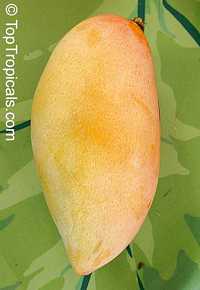
3137 Nam Doc Mai
Nam Doc Mai is a premium cultivar introduced to Florida from Thailand in 1973 where is is one of the most popular varieties. This variety is semi-dwarf and great for pot culture. Green to yellow skin, no fiber whatsoever, multiple crops possible. Eaten green or ripe, a Thailand favorite. It is hands down the most sought after of the Asian mangoes and for good reason. A great feature of this variety is that the branches bloom occasionally at different times, giving you an extended ripening season during the summer.
|
|










